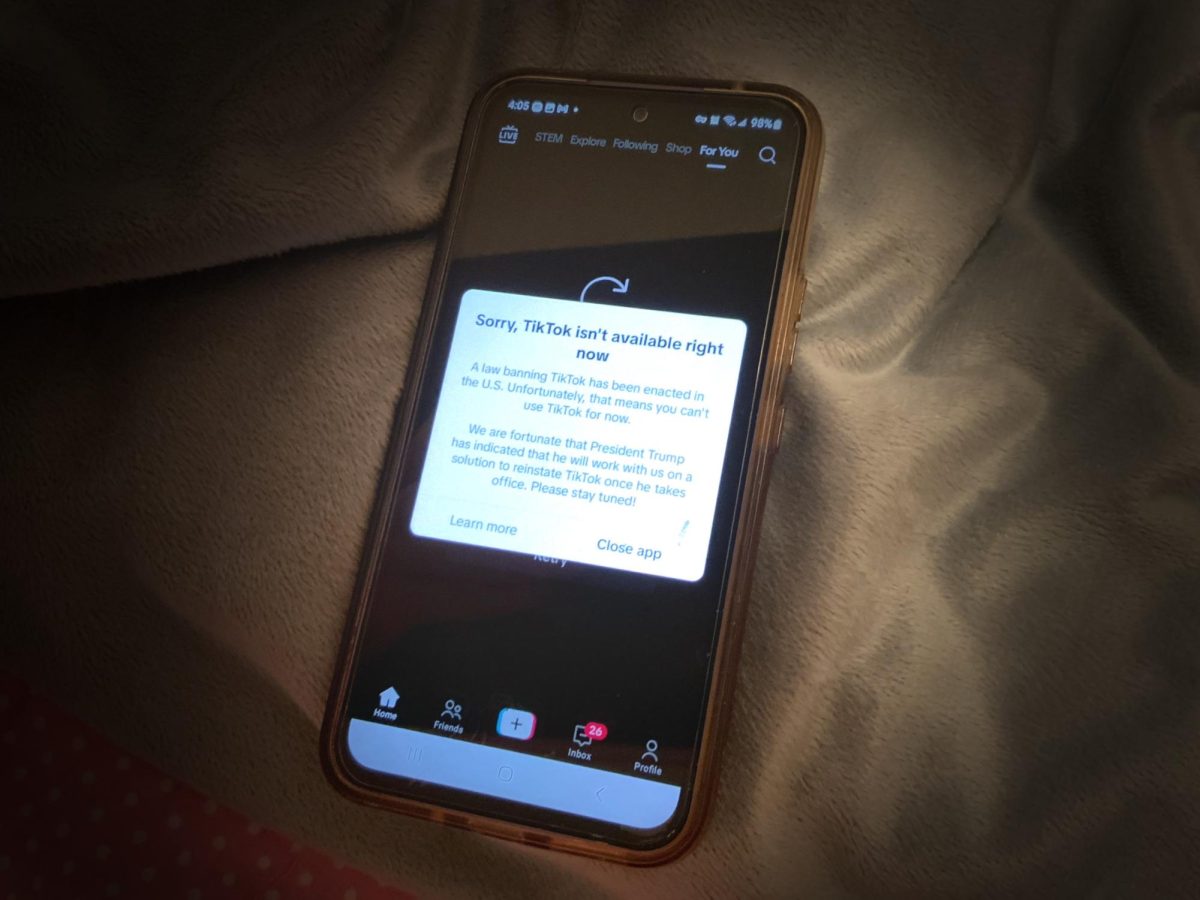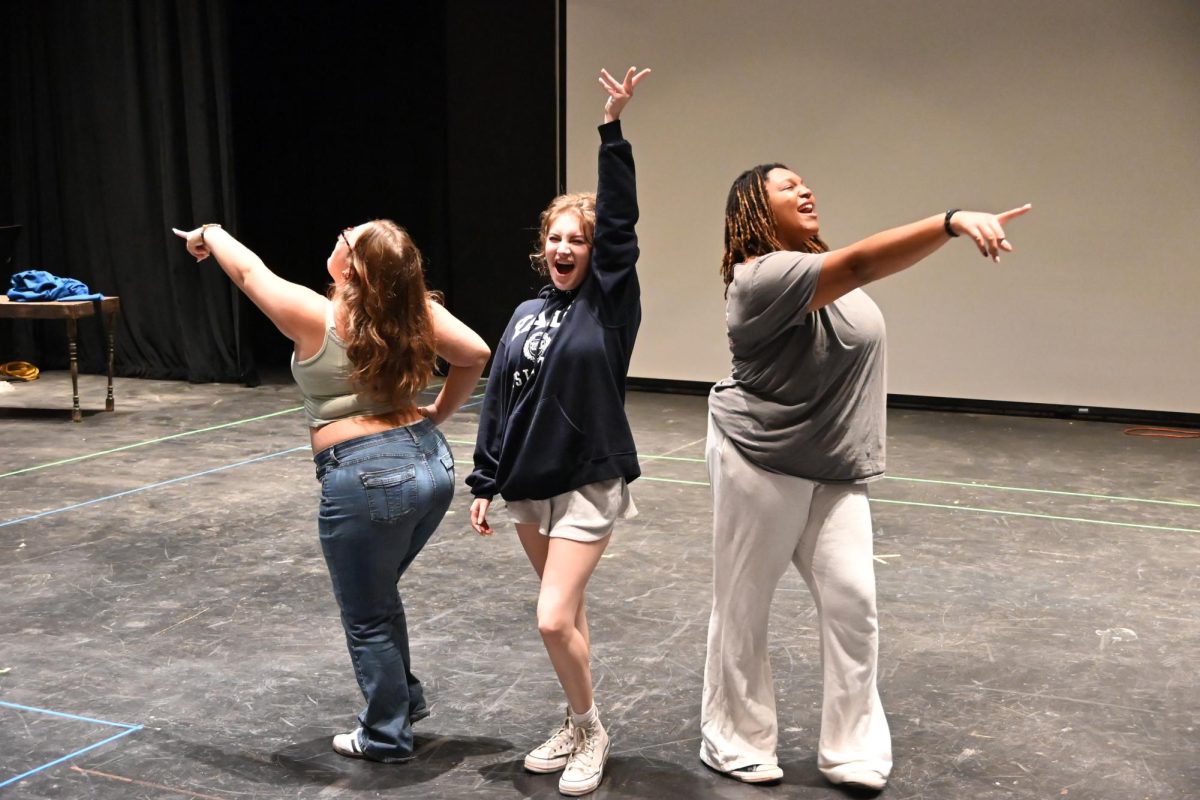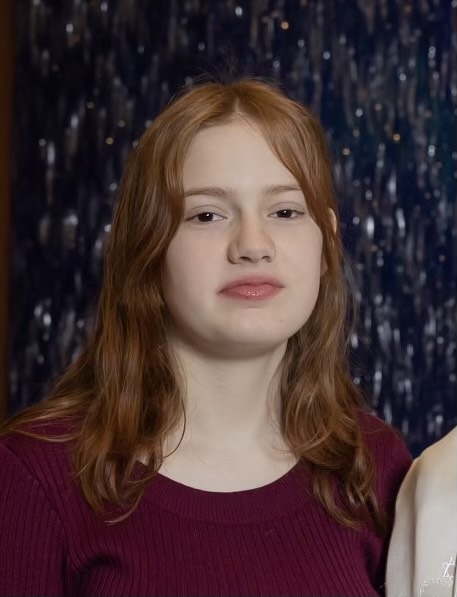Following the shutdown of TikTok in America, many continued to reflexively open the app. But less than 24 hours after the ban, the pop-up explaining that TikTok cannot operate on US devices was replaced by a new message,
“Welcome back! Thanks for your patience and support. As a result of President Trump’s efforts, TikTok is back in the U.S.! You can continue to create, share, and discover all the things you love on TikTok,” it read.
Sophomore Riley Roberson currently has a platform of nearly 14,000 followers on the app. Her posts range from beauty and lifestyle content to covering topics that are relevant to her personal beliefs and brand deals.
Roberson managed to build her following after some of her videos going viral. TikTok’s algorithm is less complicated compared to other apps, especially because it caters to short-form videos.
“It’s easy to see what’s trending, who’s trending, it’s easy to follow those trends as well and it’s easy to stick to a certain niche,” Roberson said. “And then the algorithm also pushes out your content to all different types of people so I feel like it has a bigger reach versus just like hashtags like Instagram does.”
While Roberson anticipated that TikTok’s U.S. services would end, she noted that brands didn’t appear to make preparations for a permanent loss of the social media app.
“A lot of brands were still sending out PR for influencers or were still accepting influencers for year-long programs,” Roberson said. “It didn’t make sense to me for brands to be accepting influencers when TikTok was going to get banned so I had a feeling that it would come back.”
Since TikTok’s ban was only delayed, there’s still a possibility that it could go away in the future. However, Roberson doesn’t see very much potential for serious restrictions to pass.
“Because of the political landscape of the world right now, I think that if TikTok does get banned, it’ll be another PR stunt and it’ll eventually return to the U.S.,” Roberson said. “I don’t have any backup plans because, to be frank, I don’t care as much to try to push out my content as much as it has gone viral on TikTok on other apps.”
During the weeks leading up to Jan. 19, the fate of TikTok was unclear. Many theories passed around, and it was debated whether or not getting a VPN or changing one’s location in the app store would be an effective workaround.
“I anticipated that the app would just be laggier, you wouldn’t be able to upload videos or anything like that, so to prepare for the ban I downloaded one of those TikTok saving apps and I just saved all my TikToks and was planning to move over to Instagram to post my content,” Roberson said.
This idea that TikTok could run on U.S. devices, then gradually become difficult to use and eventually inoperable was widely predicted to happen on Jan. 19. Multiple student responses in an anonymous survey about the ban expressed a similar sentiment.
“I thought it would stop being supported, taken off the app store, but still there until it became too outdated,” a student wrote.
“TikTok is known for updating multiple times per week, so therefore, there would be many bugs in the system and patches that they would not have resolved,” another student wrote.
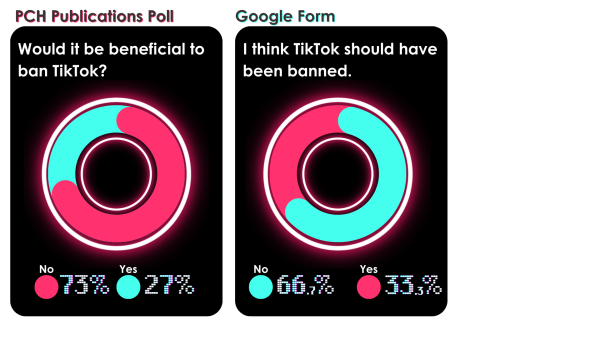
While TikTok was legitimately blocked from use in 2025, it’s far from the first time that the US government has advocated against the app. A nationwide ban also seemed like a possibility around spring of 2023 and over the past few years, some small scale restrictions–for instance, prohibiting TikTok on government devices, or some universities changing their WiFi networks to make the app inaccessible–have been implemented.
Trump himself conceived the idea of banning TikTok. His initial actions against the app on May 15, 2019 are detailed in a Washington D.C. district court memorandum on TikTok Inc. v. Trump,
“The President invoked his authority under IEEPA (among other powers) and declared a national emergency regarding the ‘extraordinary threat’ that foreign-controlled technology companies pose to U.S. national security.”
At the time, he made the same argument that Congress, the Supreme Court, and other government groups used to uphold the ban. The TikTok v. Trump memorandum states,
“The President concluded that because TikTok is owned by the China-based company ByteDance, the Chinese Communist Party might be able to ‘access . . . Americans’ personal and proprietary information—potentially allowing China to track the locations of Federal employees and contractors, build dossiers of personal information for blackmail, and conduct corporate espionage.’”
In a poll posted on the PCH Publications’ Instagram, individuals were asked whether they saw a change in TikTok’s algorithm following the ban. 43 people voted no, while 35 voted yes.
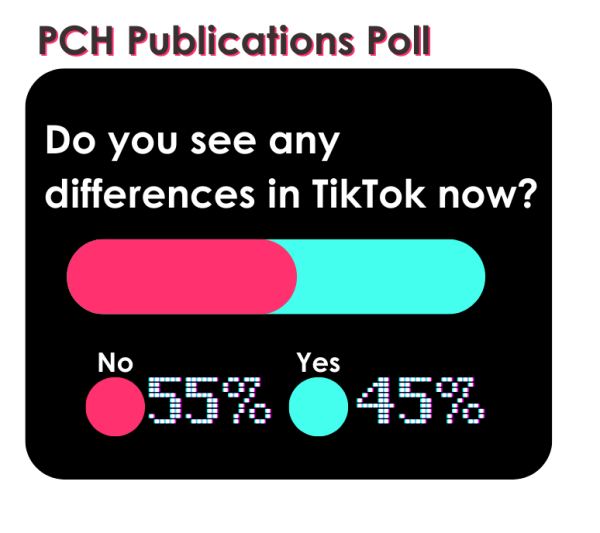
“I noticed something about ‘winter boots’, where in order to talk about politics or ICE then they need to put a ‘winter boots’ hashtag to make it seem like they are talking about winter boots,” a student wrote.
While users who still had TikTok installed could access it after the ban, those who deleted the app were less fortunate. TikTok issued alternative download methods for iOS and Android devices, though as of now it has returned to app stores.

